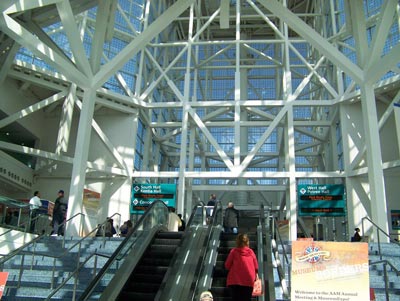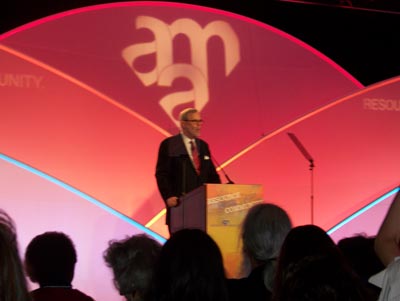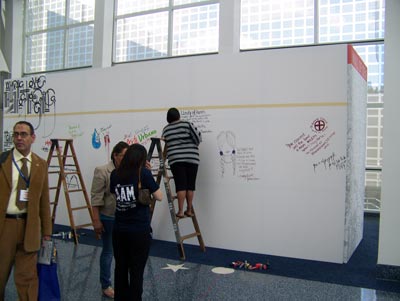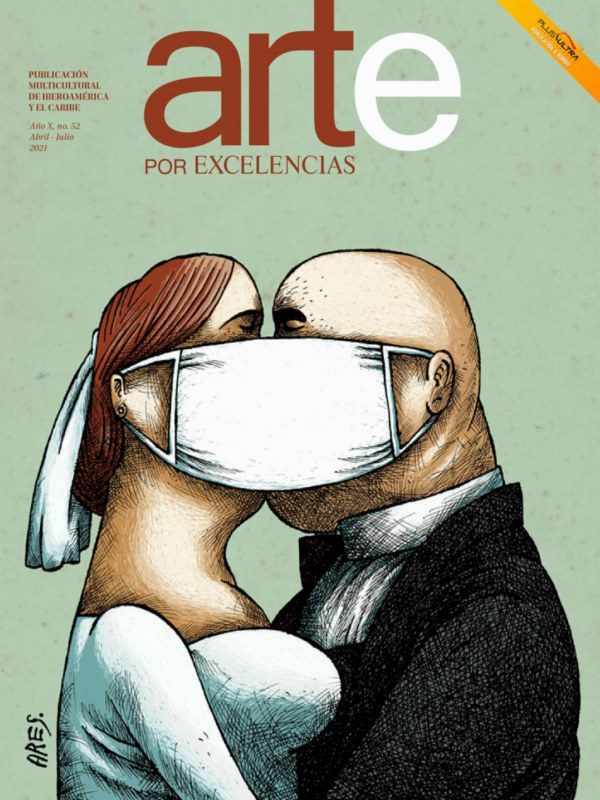The 104th Annual Meeting of American Museums (AAM), held from May 23 to 26 this year at the Los Angeles Convention Center in California, was the place of choice to take a closer look at those museums that serve better in a globalized world.
This event –the most informative and diverse trumpeted by the conclave– is no doubt a legitimate expression of the diversity and wealth of identities in the continent. The concurrence of views hinged on the underscoring of these institutions’ mission, whose main objective lies in the preservation of the past, the definition of the present and education for the future.

The city of Los Angeles –based on its condition as a big burg that harbors over 20 million citizens from 140 different nationalities and where an estimated 85 different tongues are spoken– provided the international community with a nice stay under the event’s slogan: Museums without Borders –a theme that caught on admirably in the audience. A century after its foundation, these meetings that have gathered 5,500 professionals have always had the opportunity to teach the finest techniques in the field of collection research, exhibition design, bankrolling and the most advanced technological breakthroughs. And all this much is owed to AAM, an organization that has turned this gathering into fertile grounds for experts to share fresh ideas and concepts. The achievements of each and every edition come to pass thanks to an ambience that fosters a broad spectrum of experiences and the convergence of different disciplines.
For Cuba, this was no doubt a special occasion to attend the fair with a delegation headed by Ana Cristina Perera, vice president of Museums at the National Council of Cultural Heritage; Margarita Suarez, chief of Museums at the Office of the City’s Historian, and Moraima Clavijo, head curator of the National Museum of Fine Arts, as well as Luz Merino, technical deputy director; Heriberto Rodriguez, deputy director for Marketing Management and Communications; Maximo Gomez, chief of Collections and Curatorship, and Roberto Cobas, Cuban art curator. Thanks to AAM President Ford G. Bell’s willingness and efforts, the support provided by Greats Museums and Stuart A. Ashman’s endeavor, the attendance of a Cuban interdisciplinary team, featuring major colleagues under scholarship status, was possible.
The International Council of Museums (ICOM) defines the term museum as a non-profitable, permanent institution at the service of society and its development, open to the public, that collects, acquires, preserves, does research, communicates and exhibits pieces and artifacts with educational purposes and the enjoyment of tangible and intangible materials from a nation and its environment. These public or private institutions organize basic permanent exhibitions, basically educational or artistic, by relying on a professional staff in charge of mounting the expositions.
For AAM-affiliated museums, the Code of Ethics has a common denominator in contributing –from the collections museums treasure and preserve– to the education of the public and in helping in the unraveling of different issues going on around the world. It takes into account a wide spectrum in terms of variety and types of museums, including private and State-run institutions dealing with such topics as anthropology, art, natural history, history, aquarium, trees, art centers, botanical gardens, museums for children, historic sites, natural centers, planetariums, science and technology centers, and zoo parks.
AAM gathers a multitude of cultural and educational institutions that –within the communities– serve as implemented places for the protection of the historic memory. They deal with the exhibitions of masterpieces from the history of art and overall scientific developments, with our natural environment and the latest discoveries, thus making it easier for people to learn about new technologies and expressions in the realm of culture.
The AAM program this year embraced over 160 sessions within a broad framework of topics and themes. Following a guided visit to the Convention Center, the International Exhibition opened for delegates and, for the first time ever in the history of AAM, a grand total of ten lectures were dictated with simultaneous translation into Spanish and Chinese languages, all of them distributed in the different daily sessions. Moreover, a couple of master classes on root identification based upon parental origins were imparted. One of them figured in the opening keynote speech delivered by New York’s Dominican-born poet, novelist and essayist Julia Alvarez; the one by American fiction author Amy Tan, of Chinese origin. Both are AAM members and have penned countless books. Their stories found common threads into the community fabric, into the cultural identity and the power of imagination. Some of the bestselling books were presented at the end of their presentations.

Several lectures were also imparted: How to Love a Museum, planned by means of a series of chats that assessed from a number of perspectives the different initiatives implemented and the best way to build new museums, the formation of their staffs and other resources, and the needs faced off by the younger generations of professionals in the course of today’s museum practices; Formation of a New Generation of Professionals showed way to train staffs for the execution of traditional tasks, the handling of conservation and collections and the creation of skills for the implementation of new and future technologies; Communitarian Museums took on a novel topic: the challenge to come up with communitarian museums that serve to showcase specific cultural collections with told stories and others that could foster a dialogue with the local community and assorted audiences; International Museum Associations broached the perspective offered by these societies in the designing of new programs, the chance to share exhibits and personnel –two moves that enrich both the museums and their public programs; and Training a New Generation of Professionals laid bare the different challenges that fly in the face of experts, both at the museums and other cultural bodies in a bid to document, interpret and preserve the cultural values of the communities.
Other spaces addressed current overall issues such as: Digitalization of Collections and the Internet, dealing with the data that must be available with free access, as well as the objections for the digitalization of certain information and images; Collections, Ethics and Heritage, on the ethics implied in material cultural collections to showcase indigenous culture both in national museums and others owned by tribes and indigenous populations; International Guidelines for the Preservation of Collections, that includes comparisons and contrasts of these guidelines in line with their geographical location; Life in a Material World, on the principles and practices that single out the identification of safer and more stable materials for the creation of archives dealing with the preservation of collections, as well as relevant aspects linked to support and lighting; and Preventive Conservation and Handling of Collections that referred to the cheapest options to create ambiences with the necessary elements for the storage of collections.

In this set of options and ideas lie the educational underpinnings whereby the leaders of the international community of museums broached interesting general topics that feature a good deal of updated information on that matter. Pursuing a similar goal, a number of meetings dealing with cross-cultural perspectives oriented to international attendees was held.
Within the multitude of actions deployed in the course of the event, there was a welcome party at the Museum of Contemporary Art (MOCA), a visit to the Getty Museum and the Museum of Latin American Art, as well as to several major centers linked to the framework of international museums –always in sync with the educational profile in both the use and interpretation of objects and/or places presented to the public in their exhibits. All of them count on adequate programs of documentation and preservation in the handling of collections. Attendees also paid a visit to the Grammy Museum, held a roundtable debate designed for Chinese participants, and a second one aimed at Spanish-speaking attendees.
In the course of these sessions, the changes and opportunities of new research field were looked into by a diverse audience that embraced the nontraditional cultures, based on the fact that museum management requires the creation of all kinds of cultural connections. Of all these ties, there’s a need to embrace the language of museums hailing from Asia and Latin America, and where international museum professionals from as many as forty countries museums collaborate as counterparts of the nation’s fifty states.
The city of Los Angeles provided the opportunity to visit over sixty different museums that remained open to welcome all conference attendees –a magnificent chance to take a closer look at what the cultural realm of this part of the United States is actually like. Some remarkable cases in point were LACMA, California Science Center, The Getty, Museum of Tolerance, Japanese American National Museum and Museum of Latin American Art, among others. There are many other institutions across the U.S. that showcase tangible, animated and inanimate artifacts, like the San Diego Zoo, the Desert Museum and the Memory Museum, among others.
Within the general activities, a documentary film on Cuba’s plastic art and the job done by museums on the island nation –produced by Great Museums– was shown. Over two dozen million people from around the world have already watched this revealing and instructive documentary especially produced for the conference attendees.
Thanks to AAM’s international initiative, this gathering gave participants the possibility to meet and touch base with colleagues from other museums across the U.S., as well as with a bunch of professionals from different nations. These encounters beefed up inter-institutional relationships and the exchange of exhibitions, plus a chance to weave personal contacts. All these opportunities play into the strengthening of communication ties among participants.
There was also a chance to scour the MuseumExpo™ that featured nearly 350 exhibits from world-class companies that provide services to museums. The exposition included architects, designers, light installers, packing companies, software providers, consultants, educational services and sellers of raw materials for preservation, among many other experts in the field. This was indeed a great opportunity to learn about new trends in terms of materials, technology and solutions for museum work, all of them huddled in one single space.
The event held in Los Angeles showed the new doors that are swinging wide open for communities and youngsters. Next year’s edition will take place in Houston. And a few questions now come to mind: where are we now? What are the challenges ahead of us? What do we need? How can we take on those challenges? These and other questions will be addressed while AAM is already considering the need to bring in new audiences that stand for other cultures and nations, so necessary when it comes to adding up to the knowledge and expertise of museums –an indispensable requirement to reach this development. Museums are taking the lead in this joint effort to always deliver a chance to learn –a decisive endeavor for the culture of the nations.
Related Publications

How Harumi Yamaguchi invented the modern woman in Japan
March 16, 2022












